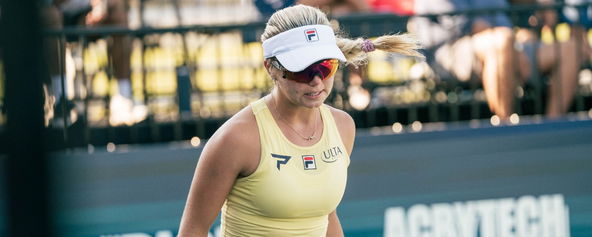
What is the most important shot in pickleball?
Jim Kloss
Jan 26, 2024 12:15 PM ET
DALLAS, TX - There is always a lot of discussion about which particular shot is the most important shot in pickleball. Is it the serve return? The third shot drop? The backhand dink? The correct answer, as it so often is, is “it depends”.
The correct answer depends on the level of the players, the skills of the players, the age/gender of the players, etc. With all that said, let’s answer it for the pros. The most important shot in pickleball, for the pros, is the counter. The counter is the response to a hard hit ball, either a drive or a speedup. Five years ago, I would have said the most important shot was the third shot drop. A year or two ago, I would have said the speedup. Today, I maintain the most important shot is the counter.
ADVERTISEMENT
Paddle technology and advancements continue to drive and change the sport. Paddles are much, much better than they were five years ago. Because they are better, the third shot drop has become easier and is now a routine shot. Pros miss relatively few third shot drops. For the very top pros, third shots (either drives or drops) are missed almost as rarely as serve returns are missed.
Turning to the men’s side first, the standard play of a point is either third shot drop leading to dinking or third shot drive/fifth shot drop leading to dinking. This formula accounts for the majority of points, and among the very top players, accounts for a very high percentage of the points. When we watch the very top players, the Johns brothers, Wilson/Newman, Johnson/Frazier, the vast majority of points quickly evolve into dink exchanges, with the point most often resolved from a speedup/counter battle. As the sport has become so focused on the speedup/counter battle, players have reacted, by improving their counter game. Speedup success rates have started to go down slightly, as countering has become so effective.
We see this development in subtle changes made by players. First, the right side players are sliding right and countering backhand all the way. Collin Johns exemplifies this change. He used to counter with scorpions frequently. He has changed instead to sliding right and countering backhand, a much more flexible shot. James Ignatowich is another player who very effectively slides right to counter when playing right side. Second, dink rallies are becoming longer. Players see they need to be more careful with their speedups, so the dink rallies are longer, looking for an opening. Third, Ernes are more frequent. The dinking goes on longer, but offense is still needed, and Ernes are one answer.
Turning to the women pros, their game is undergoing a subtle revolution. What I term “blast ball” is becoming a dominant strategy. “Blast ball” involves constant pressure on the opponents. Third shot drives, drives in transition, and speedups. It is different from being a banger, where balls are hit hard but with no direction or thought. In the blast ball game, we see effective drives, and judicious but early speedups. The target is often a defensive player, whose response is to try to reset the point, rather than counter. Constant pressure wears down the opponent, resulting in a high ball that can then be put away. This style of constant pressure is best exemplified by Rachel Rohrabacher and Anna Bright. They have gone from being an unknown partnership a year ago to the second best women’s doubles team today, by playing the blast ball style. Their recent pasting of Callie Smith/Lucy Kovalova at The Masters was a textbook example of the new style of play and how it overwhelms the older defensive style.
The women’s game differs from the men’s game in that men are much better at the counter. Thus women can get away with mediocre speedups which, if done in a men’s game, would result in a put away by counter. But it is still the counter which is so important to the women’s game. Constant pressure will increasingly be the name of the game and the players best at the counter will prevail. It is why Anna Leigh Waters remains the best player. Her strategy has always been to speed up the point and win the battle of the counters. She often hits so-so speedups, but she is so good at the counter that it does not matter that the initial speedup was not that good.
Whether it is on the men’s side or the women’s side, the counter has become the most important shot. The serve, the serve return, the third shot and the dink are all just setup shots. It is the speedup and the counter which determine who wins the majority of points. The best pair in the world at counters are Ben and Collin Johns. If they are to be dethroned, it has to come from the speedup/counter battle.
Follow me on Twitter/X @pickleball_jim
Related articles

How a Kindle transformed Ben Johns’ reading game
The handheld gadget travels with him wherever he goes.
55 minutes ago
-Victoria Radnothy

Step aside, Spotify Wrapped: Anna Bright serves up hilarious 'Dating Wrapped'
Her comedic talent is undeniable.
6 hours ago
-Victoria Radnothy

Pros travel the globe during break in PPA Tour schedule
It was a perfect opportunity to kick back, relax, and enjoy some downtime.
7 hours ago
-Victoria Radnothy

No stopping Anna Leigh Waters in 2025
Wondering just how dominant she has been through 18 PPA tournaments this year?
20 hours ago
-Matt Cudzinowski





